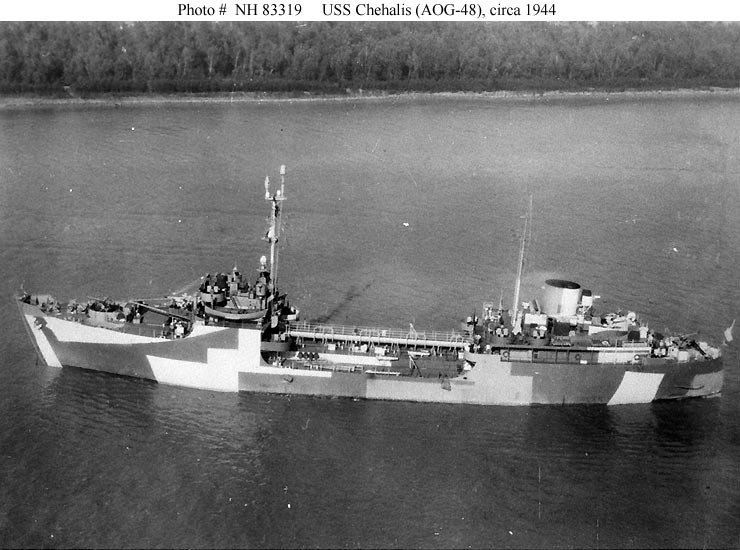This post was written by guest blogger Charles Pederson. If you would like to write for our blog, contact us at info@scottcountyhistory.org
Read Little Shipyard on the Prairie, Part 1 and Part 2.
Parts 1 and 2 of our story revealed the unexpected origins of Port Cargill, a shipyard in a most unlikely location. Part 3, the final chapter, discusses the nuts and bolts of launch, how the AOGs entered wartime service, and what became of them.
Launch!
Speedily setting up the shipyard, Cargill signed an initial contract with the U.S. Navy for six auxiliary oilers and gasoline vessels (AOGs). By the end of the war, the shipyard at Savage was to produce 18 AOGs and four towboats.
The USS Agawam was the first AOG turned out at Port Cargill. On May 6, 1943, its mostly empty hull was launched into the deep pool dredged in the river. It was positioned in an empty docking slot for initial fitting.
The launching of a vessel was quite an event. Dave Kenney, in Minnesota Goes to War, describes a typical sideways launch, as was practiced at Port Cargill:
Workers waxed and greased the huge twenty-four-by-eighteen-inch timbers—called sliding ways—that lay between the blocks on which the keel was laid. At the assigned moment, dozens of men armed with sledgehammers began driving wedges under the sliding ways until they lifted the keel off its blocks. The men then knocked the blocks away and ran from beneath the vessel as fast as they could. At that point, the ship was being held in place only by a hawser [thick mooring rope]. On the signal, the ship’s sponsor cracked a bottle of champagne . . . on the bow, and the launch master pressed a button that dropped a guillotine on the hawser. The ship, now free of all restraints, slid down the ways and crashed into the water.
It was an exciting moment waiting to see whether the vessel would right itself. It always did.
After initial fitting at Port Cargill, the Agawam was ready for delivery early in the morning of November 5, 1943. The vessel was expected to navigate the tricky intricacies of the Minnesota River 14 miles to Saint Paul and the Mississippi River. This was by no means a sure thing. Tugs and towboats escorted the ship. Its masts had been removed and laid on the deck so the ship could slide beneath bridges spanning the waterway. Kenney writes that “at several crucial points along the way, crews armed with trucks and cables stood by, ready to pull the tanker out of trouble should it run aground.”
The planners and crews needn’t have worried. The Agawam reached Saint Paul that same afternoon. The St. Paul Pioneer Press greeted its arrival: “A sleek gray ship, whose cavernous insides may carry fuel for planes to blast Germany or Japan, arrived in St. Paul. Fears that the vessel would be grounded on the turns on the Minnesota River . . . proved baseless.”
Finishing Touches
After completion at Port Cargill, the AOGs were towed to the Mississippi River, and thence to New Orleans. There the ships received final fittings, including a camouflage paint job as required. Then they were taken out for shakedown—testing the vessel under real-world operating conditions. Once the vessels received a clean bill of health, they steamed through the Panama Canal to the Pacific to support the war effort.
The entire list of AOGs includes (in order of production) Agawam, Elkhorn, Genesee, Kishwaukee, Nemasket, Tombigbee, Chehalis, Chestatee, Chewaucan, Maquoketa, Mattabesset, Namakagon, Natchaug, Nespelen, Noxubee, Pecatonica, and Pinnebog. Port Cargill produced its last ship, the Wacissa, in May 1946, about nine months after hostilities had ceased in Japan.
Additionally, four towboats had been born of the shipyard: the Bataan, Coral Sea, Milne Bay, and Bou Arada.
What Happened After
Many of the AOGs survived World War II and went on to have fruitful wartime and postwar lives.
The Agawam, for example, Port Cargill’s first ship, supported the invasion of the Philippine Islands in March 1945. Immediately after Japan surrendered, the Agawam was sent to Yokohama, Japan, to fuel Army bases through early 1946. It was stationed in various areas until it was decommissioned in 1960 and placed in reserve until being scrapped in 1975.
Not all Cargill-manufactured AOGs had happy or peaceful careers. The USS Chehalis (pictured in camouflage paint), was launched in late 1944. Five years later, one of its gasoline tanks exploded, and the ship burned and sank. The hull was raised in 1955 and sold to American Samoa. Courtesy of Archives Branch, Naval History and Heritage Command, Washington, DC.
Some of the AOGs remained in the U.S. military, serving in Korea and Vietnam. Many received official recognition for their service during these conflicts. Some were sold to militaries in Greece, Colombia, and Taiwan. Some became civilian vessels, used for fishing or other commercial pursuits. Many were sold for scrap metal.
Several of the AOGs were used well into the early 2000s. The longest-lived vessels were the Elkhorn (renamed Hsing Lung) and Pecatonica (Chang Pei), which ended their useful life in 2008 as part of the Taiwanese Navy.
After World War II ended, government contracts for shipbuilding dried up. Port Cargill was converted into a grain shipping hub, which proved far more profitable than building ships had been. Today, hundreds of trucks a day drop off grain, salt, and other commodities at the port. From there barges carry the commodities down the Minnesota River to its confluence with the Mississippi, and from there to the rest of the world.
One or two buildings from the original site still quietly stand sentinel, perhaps contemplating the busy past. The sliding ways’ fingers still reach into the quiet waters of the Minnesota River, into a patriotic past.
Early 2022: A quiet winter evening at the remnants of the sliding ways at Port Cargill shipyards. Courtesy of Charles Pederson, with thanks to Cargill Inc.
Learn More!
Blegen, Theodore H. (1975). Minnesota: A History of the State (2nd ed.). University of Minnesota Press.
British Pathé. (2020, November 10). Five Ships Launched Sideways (1938). [Video].
Cargill.com. (n.d.). Building Ships to Provide Wartime Resources.
City of Savage. (n.d.). History: Cargill Ship Building.
Colton, Tim. (2021, August 7). Emergency Shipyards: Cargill.
Congressional Record. (1944, March 24–June 12). Launching of the U.S.S. “Chehalis”: Extension of Remarks of Hon. Fred Norman of Washington in the House of Representatives, Tuesday, May 2, 1944.
Duluth Seaway Authority. (2004). Launching the Quint Fleet [PDF].
Federal Reserve History. (2013, November 22). The Great Depression: 1929–1941.
Jordan Independent. (1942, April 2). Ocean Shipbuilding Will Be Done at Savage.
Kenney, Dave. (2005). Minnesota Goes to War: The Home Front During World War II. Minnesota Historical Society Press.
Minnesota Digital Library. (n.d.). Port Cargill, Scott County, Minnesota [Photograph].
MNOpedia. (n.d.). Launching the Agawam [Photo].
Naval History and Heritage Command. (n.d.). Agawam III (AOG-6).
Nelson, Tim. (2015, October 19). From Humble Beginnings to Global Power, Cargill Marks 150 Years. MPR News.
Roosevelt, Franklin D. (1939, September 3). Fireside Chat. The American Presidency Project.
Roosevelt, Franklin D. (1941, January 6). President Roosevelt’s Annual Message (Four Freedoms) to Congress (1941). Our Documents.
Roosevelt, Franklin D. (1942, January 6). State of the Union Address: Franklin D. Roosevelt (January 6, 1942). In Infoplease. https://www.infoplease.com/primary-sources/government/presidential-speeches/state-union-address-franklin-d-roosevelt-january-6-1942
Tapalaga, Andrei. (2020, July 14). The Tragic Story of the Dionne Quintuplets. History of Yesterday.
Time. (1943, September 13). Production: The Farmer Goes to Sea.
U.S. Bureau of Labor Statistics. (n.d.) CPI Inflation Calculator. https://www.bls.gov/data/inflation_calculator.htm
U.S. Naval History Division. (1959). Dictionary of American Naval Fighting Ships (Vol. 5). Navy Department, Office of the Chief of Naval Operations, Naval History Division. Click “Read for Free” button.
Wurzer, Cathy. (2010, June 16). Minn. Companies Helped Fight WWII in Surprising Ways. MPR News Morning Edition.
Zenith City Press. (n.d.). May 8, 1943: The “Dionne Quints” Launch Five Ships.





